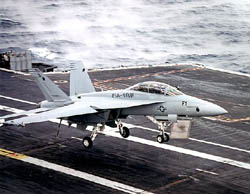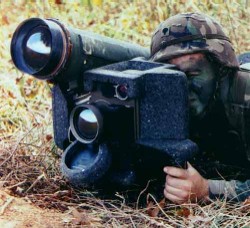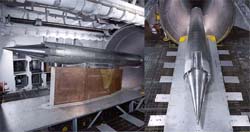Daily News
by Gail Helmer
[ Send Us News | Archives ]
Uncommon Valor v1.20 Released
Matrix Games has released version 1.20 of Uncommon Valor: Campaign for the South Pacific. Uncommon Valor was released on May 15th and is a completely new operational game covering the campaign in the area around Australia, New Guinea and Guadalcanal during World War II.
The update adjusts play balance for certain situations, fixes several reported bugs and addresses reports of possible PBEM cheating since the last version. The full list of improvements has forty-eight items and can be found on Matrix Games’ web site. Note that owners of Uncommon Valor will need to download and install the previous patches before updating to v1.20.
For more information on Uncommon Valor, check out COMBATSIM.COM's review.
eGames to Publish Xtreme Air Racing
eGames has signed a licensing agreement with Victory Simulations, Inc. to publish their flight simulation game Xtreme Air Racing. Accurate representations of the airplanes that compete in the National Championship Air Races held ever year in Reno, Nevada, together with realistic 3D terrain graphics combine to provide the ultimate high speed racing experience.
Xtreme Air Racing’s many features include extraordinary 3-D graphics with meticulous attention to aircraft detail and terrain; races in 5 different geographical locations ranging from the Reno desert to the Alps of Europe to the jungles of Thailand; over 20 tracks; 25 different single- and double-prop, single seat planes; multiplayer mode for up to 8 players; one of the most advanced flight physics engines with over 200 variables in the airframe; wake turbulence from other aircraft; air combat and stunt modes; extensive aircraft setup and modification.
Military News
Super Hornets Head Out on First Deployment
The F/A-18E/F Super Hornet moved one step closer to combat when it deployed yesterday onboard the USS Abraham Lincoln (CVN-72) as part of Carrier Air Wing Fourteen. U.S. Navy Strike Fighter Squadron (VFA-115) landed 12 Super Hornets from Naval Air Station Lemoore on the carrier, which is heading across the Pacific with other ships from the battle group. This is the first operational use of the Super Hornet.
"First deployment of the Super Hornet is the culmination of years of hard work and commitment on the part of Boeing, members of the Hornet Industry Team and the U.S. Navy," said Tony Parasida, vice president of the Boeing F/A-18 Hornet program. "The Super Hornet is ready for combat, ready to defend our nation in the ongoing war on terrorism and ready to carry the men and women of the U.S. Navy safely into and out of harm's way."

Deliveries of the Super Hornet have been on or ahead of schedule throughout the life of the program. The first of seven test-model aircraft rolled out in September 1995. Following a highly successful flight-test program, the first production model Super Hornet was delivered in December 1998, more than a month ahead of schedule. After completing the most thorough operational evaluation in naval history, the U.S. Navy stood up the first Super Hornet squadron at NAS Lemoore in January 1999. The 100th production- model aircraft was delivered in June 2002.
The Super Hornet can perform a broad range of air-to-air and air-to-ground missions during the day or at night, in virtually any kind of weather. Equipped with an aerial refueling system, the Super Hornet also can serve as a tactical airborne tanker.
Eleven weapons stations, two more than the Hornet, carry a vast array of air-to-air and air-to-surface weapons including precision-guided munitions. The Super Hornet can carry more than 17,000 pounds of ordnance, more than 30,000 pounds of fuel and can reach airspeeds of more than 1.5 times the speed of sound.
Taiwan to Purchase Javelin Anti-Tank Weapon System
The U.S. Army has executed a letter of agreement paving the way for the sale of the Javelin anti-tank weapon system to Taiwan. The agreement with the government of Taiwan, signed in Washington D.C. June 22, represents the first major sale of Javelin in the Pacific region. It is expected to result in an award to the Raytheon-Lockheed Martin Javelin Joint Venture of approximately $39 million. This is the joint venture's fourth international sale, which follows purchases in late 2001 by Jordan and Lithuania and an undisclosed country.
The sale includes more than 360 missiles and 40 command launch units, training devices, logistics support, associated equipment and training.

"Javelin ensures that the Taiwanese armed forces have the world's best anti-tank weapon with highest soldier survivability and system lethality, at the lowest support and life cycle cost," said Col. John Weinzettle, U.S. Army Close Combat Missile Systems (CCMS) project manager. "Javelin's multi-mission capabilities give infantry soldiers the means to engage alternate targets, such as field fortifications, buildings, helicopters, landing craft and small boats," he said.
"Javelin is ideally suited for the Taiwanese Army and we are extremely pleased to introduce Javelin to the island nation," stated Mike Crisp, president, Javelin Joint Venture. "With its sophisticated missile seeker and tracker, the lightweight, one man-transportable Javelin anti-armor weapon system has consistently demonstrated a greater than 90 percent first-time gunner success rate."
"Javelin's long-wave infrared seeker is resistant to countermeasures and battlefield obscurants, which is critical in combat," said Howard Weaver, Javelin Joint Venture vice president. "Javelin is also safe to fire from enclosures and it can be fired three times in less than 90 seconds. These features, which no other system has demonstrated, make Javelin the best choice for Taiwan and others in the international defense community."
Boeing Receives HyFly Award
Phantom Works, the advanced research and development unit of Boeing, has received a $92.4 million award from the Defense Advanced Research Projects Agency, or DARPA, to design, develop and test-fly a hypersonic strike missile demonstrator vehicle.
DARPA and the Office of Naval Research, or ONR, jointly fund the HyFly program. During the four-year HyFly program, Boeing and its principal subcontractor, Aerojet, in Sacramento, Calif., will test-fly 11 air vehicles. The last eight will be powered by a dual combustion ramjet engine at speeds up to Mach 6. In addition to Boeing and Aerojet, the HyFly program team includes the Johns Hopkins University Applied Physics Laboratory or JHU/APL and the Naval Air Warfare Center Weapons Division in China Lake, Calif.

"HyFly's objective is to mature the dual combustion, ramjet-based, hypersonic strike missile concept. We'll accomplish this through flight demonstration, in a weapon configuration that's compatible with launch from surface ships and submarines as well as U. S. Navy and Air Force aircraft," said Preston Carter, DARPA's program manager for HyFly.
On May 30, the first successful test of a full-scale, fully integrated, liquid hydrocarbon fueled DCR engine was accomplished at the NASA Langley Research Center in Hampton, Va.
"This is the first time a full-scale scramjet missile engine has been tested with conventional, liquid hydrocarbon fuel where the complete engine flow path is fully installed in a missile configuration," said Mike White, the JHU/APL program manager for advanced vehicle technologies. "This has enabled us to measure for the first time, net positive thrust for an installed hydrocarbon fueled scramjet engine. This is a major milestone for the hypersonic community and is the product of a real team effort involving DARPA, ONR, JHU/APL, Boeing, Aerojet and NASA."
The test, conducted at simulated hypersonic flight conditions of Mach 6.5 at 90,000 feet, is the first in a series that will characterize the DCR engine performance in key operating Mach/altitude regions. Additional tests are planned later this year at the Arnold Engineering Development Center, Arnold Air Force Base, Tenn., to verify operation at Mach 3.5 and 4.1 flight conditions. These tests will simulate the hypersonic engine taking over following a rocket boost.
Flight testing starts in 2003 with the separation of an un-powered, controlled vehicle from the launch aircraft. Dispense of a surrogate submunition in the terminal phase of flight will be demonstrated in 2004.
The first DCR powered flight is also planned for 2004, with the full series of tests planned for completion in 2006.
John Fox, HyFly program manager for Phantom Works, says further development to operational status would result in a weapon that "could revolutionize strike capability against both time-critical and deeply-buried targets."
[ Send Us News | Archives ]
by Gail Helmer
Thursday July 25, 2002
- Uncommon Valor v1.20 Released
- eGames to Publish Xtreme Air Racing
- Super Hornets Head Out on First Deployment
- Taiwan to Purchase Javelin
- Boeing Receives HyFly Award
Uncommon Valor v1.20 Released
Matrix Games has released version 1.20 of Uncommon Valor: Campaign for the South Pacific. Uncommon Valor was released on May 15th and is a completely new operational game covering the campaign in the area around Australia, New Guinea and Guadalcanal during World War II.
The update adjusts play balance for certain situations, fixes several reported bugs and addresses reports of possible PBEM cheating since the last version. The full list of improvements has forty-eight items and can be found on Matrix Games’ web site. Note that owners of Uncommon Valor will need to download and install the previous patches before updating to v1.20.
For more information on Uncommon Valor, check out COMBATSIM.COM's review.
eGames to Publish Xtreme Air Racing
eGames has signed a licensing agreement with Victory Simulations, Inc. to publish their flight simulation game Xtreme Air Racing. Accurate representations of the airplanes that compete in the National Championship Air Races held ever year in Reno, Nevada, together with realistic 3D terrain graphics combine to provide the ultimate high speed racing experience.
Xtreme Air Racing’s many features include extraordinary 3-D graphics with meticulous attention to aircraft detail and terrain; races in 5 different geographical locations ranging from the Reno desert to the Alps of Europe to the jungles of Thailand; over 20 tracks; 25 different single- and double-prop, single seat planes; multiplayer mode for up to 8 players; one of the most advanced flight physics engines with over 200 variables in the airframe; wake turbulence from other aircraft; air combat and stunt modes; extensive aircraft setup and modification.
Military News
Super Hornets Head Out on First Deployment
The F/A-18E/F Super Hornet moved one step closer to combat when it deployed yesterday onboard the USS Abraham Lincoln (CVN-72) as part of Carrier Air Wing Fourteen. U.S. Navy Strike Fighter Squadron (VFA-115) landed 12 Super Hornets from Naval Air Station Lemoore on the carrier, which is heading across the Pacific with other ships from the battle group. This is the first operational use of the Super Hornet.
"First deployment of the Super Hornet is the culmination of years of hard work and commitment on the part of Boeing, members of the Hornet Industry Team and the U.S. Navy," said Tony Parasida, vice president of the Boeing F/A-18 Hornet program. "The Super Hornet is ready for combat, ready to defend our nation in the ongoing war on terrorism and ready to carry the men and women of the U.S. Navy safely into and out of harm's way."

Deliveries of the Super Hornet have been on or ahead of schedule throughout the life of the program. The first of seven test-model aircraft rolled out in September 1995. Following a highly successful flight-test program, the first production model Super Hornet was delivered in December 1998, more than a month ahead of schedule. After completing the most thorough operational evaluation in naval history, the U.S. Navy stood up the first Super Hornet squadron at NAS Lemoore in January 1999. The 100th production- model aircraft was delivered in June 2002.
The Super Hornet can perform a broad range of air-to-air and air-to-ground missions during the day or at night, in virtually any kind of weather. Equipped with an aerial refueling system, the Super Hornet also can serve as a tactical airborne tanker.
Eleven weapons stations, two more than the Hornet, carry a vast array of air-to-air and air-to-surface weapons including precision-guided munitions. The Super Hornet can carry more than 17,000 pounds of ordnance, more than 30,000 pounds of fuel and can reach airspeeds of more than 1.5 times the speed of sound.
Taiwan to Purchase Javelin Anti-Tank Weapon System
The U.S. Army has executed a letter of agreement paving the way for the sale of the Javelin anti-tank weapon system to Taiwan. The agreement with the government of Taiwan, signed in Washington D.C. June 22, represents the first major sale of Javelin in the Pacific region. It is expected to result in an award to the Raytheon-Lockheed Martin Javelin Joint Venture of approximately $39 million. This is the joint venture's fourth international sale, which follows purchases in late 2001 by Jordan and Lithuania and an undisclosed country.
The sale includes more than 360 missiles and 40 command launch units, training devices, logistics support, associated equipment and training.

"Javelin ensures that the Taiwanese armed forces have the world's best anti-tank weapon with highest soldier survivability and system lethality, at the lowest support and life cycle cost," said Col. John Weinzettle, U.S. Army Close Combat Missile Systems (CCMS) project manager. "Javelin's multi-mission capabilities give infantry soldiers the means to engage alternate targets, such as field fortifications, buildings, helicopters, landing craft and small boats," he said.
"Javelin is ideally suited for the Taiwanese Army and we are extremely pleased to introduce Javelin to the island nation," stated Mike Crisp, president, Javelin Joint Venture. "With its sophisticated missile seeker and tracker, the lightweight, one man-transportable Javelin anti-armor weapon system has consistently demonstrated a greater than 90 percent first-time gunner success rate."
"Javelin's long-wave infrared seeker is resistant to countermeasures and battlefield obscurants, which is critical in combat," said Howard Weaver, Javelin Joint Venture vice president. "Javelin is also safe to fire from enclosures and it can be fired three times in less than 90 seconds. These features, which no other system has demonstrated, make Javelin the best choice for Taiwan and others in the international defense community."
Boeing Receives HyFly Award
Phantom Works, the advanced research and development unit of Boeing, has received a $92.4 million award from the Defense Advanced Research Projects Agency, or DARPA, to design, develop and test-fly a hypersonic strike missile demonstrator vehicle.
DARPA and the Office of Naval Research, or ONR, jointly fund the HyFly program. During the four-year HyFly program, Boeing and its principal subcontractor, Aerojet, in Sacramento, Calif., will test-fly 11 air vehicles. The last eight will be powered by a dual combustion ramjet engine at speeds up to Mach 6. In addition to Boeing and Aerojet, the HyFly program team includes the Johns Hopkins University Applied Physics Laboratory or JHU/APL and the Naval Air Warfare Center Weapons Division in China Lake, Calif.

"HyFly's objective is to mature the dual combustion, ramjet-based, hypersonic strike missile concept. We'll accomplish this through flight demonstration, in a weapon configuration that's compatible with launch from surface ships and submarines as well as U. S. Navy and Air Force aircraft," said Preston Carter, DARPA's program manager for HyFly.
On May 30, the first successful test of a full-scale, fully integrated, liquid hydrocarbon fueled DCR engine was accomplished at the NASA Langley Research Center in Hampton, Va.
"This is the first time a full-scale scramjet missile engine has been tested with conventional, liquid hydrocarbon fuel where the complete engine flow path is fully installed in a missile configuration," said Mike White, the JHU/APL program manager for advanced vehicle technologies. "This has enabled us to measure for the first time, net positive thrust for an installed hydrocarbon fueled scramjet engine. This is a major milestone for the hypersonic community and is the product of a real team effort involving DARPA, ONR, JHU/APL, Boeing, Aerojet and NASA."
The test, conducted at simulated hypersonic flight conditions of Mach 6.5 at 90,000 feet, is the first in a series that will characterize the DCR engine performance in key operating Mach/altitude regions. Additional tests are planned later this year at the Arnold Engineering Development Center, Arnold Air Force Base, Tenn., to verify operation at Mach 3.5 and 4.1 flight conditions. These tests will simulate the hypersonic engine taking over following a rocket boost.
Flight testing starts in 2003 with the separation of an un-powered, controlled vehicle from the launch aircraft. Dispense of a surrogate submunition in the terminal phase of flight will be demonstrated in 2004.
The first DCR powered flight is also planned for 2004, with the full series of tests planned for completion in 2006.
John Fox, HyFly program manager for Phantom Works, says further development to operational status would result in a weapon that "could revolutionize strike capability against both time-critical and deeply-buried targets."
